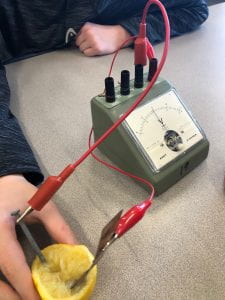How cells multiply!
Asexual reproduction:
Asexual reproduction is when a single cell makes clones of itself. There are five different types of asexual reproduction, budding, fragmentation, binary fission, vegetative reproduction, finally spore. Budding is when the original parent makes a whole new copy of itself (that is attached to itself)it does this by just repeating mitosis, then when this new organism is done growing it will sometimes break off into a bud. These buds can repeat this process, budding is common to happens with hydra and sponges. Fragmentation is when the original parent organism undergoes an injury, and the part of that fell off creates a whole new clone of the parent. examples of this are starfish and some types of worms. Binary fission is just when the parent organism splits into identical copies of itself. This is what bacteria uses to make so much of itself. Vegetative reproduction is something that happens in special plant cells that develop and then forms clones of the parent. This is how plants like potatoes and strawberries can spread throughout your garden. finally spore is when a single cell creates a whole new organism, this is common within fungi and some bacterias.
pros of asexual reproduction:
-you only need one parent to reproduce.
-super fast and easy way to increase the population.
-not a lot of time and barely any effort needed to create new organisms.
cons of asexual reproduction:
-the whole population has the same weaknesses since its all just one organism cloned.
-there is no differences between any of the organisms.
Sexual reproduction:
Sexual reproduction is when different organisms come together to form a new organism (this is how anything actually living is created). There are three different stages of this reproduction, first, mating, second, fertilization, and third, development. Mating is basically meiosis, so the DNA from both the dad and the mom crossover to make new DNA unique to that new organism. Fertilization this is when the sperm and egg cells are joining to make the completely new organism. finally development, its in the name. this is just when this organism is forming inside of the egg. this is the process of embryonic development.
pros of sexual reproduction:
-makes a completely new and unique organism.
-not likely to be affected by something hurting others of its kind because it is not a clone of one parent.
-adaptation can happen throughout reproduction. (can help with survival in new or different places.
cons of sexual reproduction:
-not possible to reproduce without a mate.
-takes a lot of time and effort.
Mitosis:
Mitosis is the process of replacing lost of dead cells. It will duplicate the contents of the nucleus and make two new equivalent cells. during mitosis there is prophase, metaphase, anaphase and telophase. Prophase is when the spindle fibres form and they attach themselves to the chromosomes centromeres. during metaphase all of the chromosomes in the cell line themselves up onto the equator of the cell. Anaphase is when the spindle fibres separate the chromosomes into two sister chromatids and pull them to opposite sides of the cell. During telophase all of the spindle fibres disappear and two new nuclear membranes form around the two new separate groups of the chromosomes. Mitosis is the shortest stage within the cell cycle. I really understood this process when we did the lab with. the string and pipe cleaners.
Meiosis:
Meiosis is a really big part of sexual reproduction. It basically goes through the same steps as mitosis but doubles it. There is prophase 1, metaphase 1, anaphase 1, telophase 1, then prophase 2, metaphase 2, anaphase 2, and telophase 2. The only difference between the two is that in prophase 1 of meiosis there is something called crossover which is taking parts from the mom and parts from the dad to make a unique new organism with a mixture of both of the parents DNA. Also is anaphase 1 the chromosomes don’t get separated into sister chromatids they just stay together until anaphase 2.
How do organisms grow?
Organisms grow using either mitosis or meiosis. These two processes, keep happening until they can make up for all of the lost or dead cells they must replace. A really good example of this human skin cells, everyday we shed millions of them but then again everyday we also create millions of them. If mitosis and meiosis didn’t exist we wouldn’t have skin within hours. These operations make sure every living organism can actually be a living organism.



















